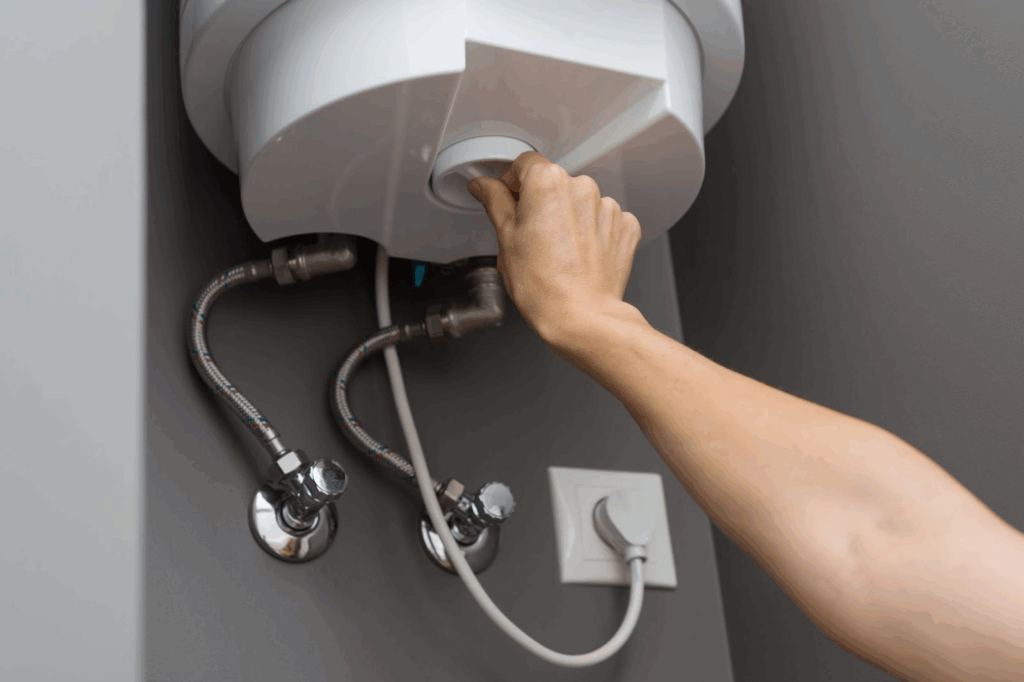Installing a tankless water heater offers a more efficient way to manage hot water than traditional tank systems. These units heat water only when needed, which cuts down on energy use and avoids the standby costs of storing hot water. While the upfront price may seem steep, the long-term savings in energy bills, maintenance, and replacement costs make the investment worthwhile. Water heater services now include tankless installations as more property owners look for lasting value. Choosing this type of system means fewer ongoing expenses and more control over energy use.
Upfront vs. Long-Term Costs of Installing Tankless Water Heater
Installing a tankless water heater means paying more upfront but benefiting from lower costs over time. Many property owners hesitate because of the initial price tag, but the long-term value often outweighs the early expenses. By breaking down the upfront and long-term costs, you can better understand how this system fits your budget. Knowing what you’ll spend now and what you’ll save later helps you make a smarter decision:.
Upfront Costs
Switching to a tankless water heater comes with an initial cost that can catch some property owners off guard. While the long-term savings are clear, the upfront investment involves more than buying the unit. Installation may require plumbing, gas lines, or electrical system changes to accommodate the new setup. Knowing where your money goes helps you make a more intelligent decision before upgrading.
Unit Price
Tankless water heaters typically cost more than traditional tank units. Pricing depends on brand, size, flow rate, and energy source. Gas models often cost more than electric ones. Higher efficiency and a longer lifespan increase the sticker price and justify the cost over time.
Installation Labor
Professional installation can take several hours and usually requires licensed plumbers or HVAC technicians. Labor costs vary depending on the complexity of your setup and local rates. Any adjustments to your home’s layout or utility systems can increase labor time and fees.
Gas or Electrical Upgrades
Many tankless systems require upgraded gas lines or higher-capacity electrical circuits. If your existing connections can’t support the demand, an electrician or gas technician must make modifications. These upgrades can be one of the most expensive parts of the process.
Venting Materials
Proper ventilation is essential for gas-powered tankless water heaters to operate safely. This usually involves installing stainless steel venting systems or rerouting exhaust lines. The cost depends on the new venting and the distance from the unit to the exterior wall.
Permit Fees
Local building codes may require permits before installation begins. These fees vary by location and sometimes include inspections before and after the job. Skipping permits can lead to fines or complications during property resale, so it’s best to factor them into your budget.
Long-Term Costs
Long-term costs reflect how much you spend or save after installing the tankless water heater. These include energy bills, repair costs, maintenance, and system replacements. A tankless unit may cost more to install, but it tends to last longer and run more efficiently. Fewer breakdowns and lower energy use result in consistent savings over the years.
Monthly Energy Use
Tankless water heaters only heat water when needed, which reduces overall energy consumption. Traditional tanks keep water warm all day, even when it’s not used. This constant use increases monthly bills. By cutting standby energy loss, tankless systems lower ongoing utility expenses.
Repairs and Maintenance
Tank-style systems often experience corrosion, leaks, and sediment buildup, which lead to frequent service calls and part replacements. Tankless models have fewer internal parts and do not store water, so problems occur less frequently. It lowers both repair frequency and overall maintenance costs.
System Replacement
Most tank units last around eight to 12 years before needing replacement. Tankless systems often last 15 to 20 years or more with proper care. A longer lifespan means fewer purchases and lower long-term spending. This delay in replacement helps balance the higher upfront investment.

How Installing a Tankless Water Heater Saves Money
Installing a tankless water heater saves money over time by cutting energy use, reducing repairs, and lasting longer than traditional units. These systems heat water only when needed, which means lower monthly bills and fewer wasted resources. While the upfront cost is higher, the overall return comes through consistent long-term savings.
Lower Monthly Energy Bills
Tankless water heaters don’t store hot water—they heat it as needed, eliminating standby energy loss. Traditional tank models keep water hot all day, even when unused. This constant cycling uses more power or gas, especially in larger households. On-demand heating allows for tighter control over usage, especially during low-demand hours. As a result, energy bills drop steadily without sacrificing access to hot water.
Fewer Repairs and Maintenance Costs
Tank models often experience corrosion, leaks, and sediment buildup, which leads to service calls, part replacements, and regular flushing. Tankless systems don’t hold water internally, so buildup is less likely. Fewer moving parts and no tank reduce the chance of sudden breakdowns. Over time, this leads to fewer repair bills and less need for professional maintenance.
Longer System Lifespan
Traditional water heaters typically last eight to 12 years. Tankless models, on the other hand, can last up to 20 years with proper care. A longer lifespan means fewer replacements, which saves thousands over decades. The cost of replacing a tank model every decade adds up quickly. Investing once in a tankless unit avoids repeat purchases and labor fees.
Reduced Water Waste
Tankless systems deliver hot water faster, which means less waiting time and less water going down the drain. Hot water can take a while to reach the tap in traditional setupsIn traditional setups especially in large buildings. Over time, that delay leads to gallons of wasted water every week. Quicker delivery cuts that waste and lowers water bills. Using less water also means less strain on water heaters and plumbing systems.
Rebates and Energy Credits
Some tankless units qualify for federal or local rebates based on their energy efficiency ratings. Utility companies may also offer incentives for switching to energy-saving models. These rebates help reduce the total installation cost and increase the return on investment. Credits vary by region, so checking what’s available before purchasing is worth checking. Taking advantage of these programs puts money back in your pocket faster.
No Standby Heat Loss
Traditional water heaters constantly reheat water stored in the tank, even when no one uses it. This leads to standby heat loss, driving up energy use and costs. Tankless units avoid this by heating water only when a tap is turned on. No energy is wasted keeping gallons of water hot around the clock. Cutting out standby losses adds up to actual savings over time.
Lower Risk of Water Damage
Tank systems can fail and flood areas if the tank leaks or bursts. Cleanup costs and repairs can get expensive, especially if damage spreads to floors or walls. Tankless water heaters have no large reservoir, so the chance of a major leak is much lower. Fewer leaks mean less money spent on water damage repair and insurance claims. Preventing a single leak-related disaster can offset the higher upfront cost.
Less Frequent Replacement Costs
Replacing a traditional water heater every eight to 12 years adds recurring costs over a lifetime. Tankless systems stretch that cycle to 15–20 years, reducing how often you need to reinvest. Fewer replacements also mean fewer labor fees and installation expenses. The longer lifespan spreads out your initial investment, making it more cost-effective in the long run. Over time, you spend less by buying fewer units.
Smarter Energy Use in High-Demand Homes
Tankless systems adjust heating based on actual usage, which is ideal for larger households. Multiple family members can shower back-to-back without running out of hot water. Traditional tanks often struggle to keep up, forcing users to wait or use energy to reheat. Efficient performance under high demand keeps energy use steady instead of spiking. Consistent output without overworking the system helps keep bills predictable and manageable.
Improved Home Value and Appeal
Many buyers look for energy-efficient upgrades, and tankless water heaters check that box. A modern system can make your property stand out in a competitive market. Even if you’re not selling soon, higher efficiency boosts your home’s perceived value. Real estate agents often highlight tankless systems as a feature worth paying more for. That added value can bring in more money during resale or rental negotiations.
Fewer Service Disruptions Over Time
Tank-style systems are more likely to break down unexpectedly due to wear or sediment buildup. These breakdowns can mean paying extra for emergency repairs or temporary fixes. Tankless units have fewer problems and tend to operate without sudden issues. Less downtime means you don’t have to spend on short-term solutions like portable heaters or hotel stays. Over time, smoother operation saves both money and stress.
What to Consider When Installing a Water Heater
Installing a water heater involves more than picking a model and setting a date. Several factors affect how well the unit performs and how much you spend over time. Looking at the size, fuel type, location, and installation needs helps avoid regrets later. A little planning now can prevent problems that cost money and comfort.
Water Heater Size
The size of your water heater should match your household’s daily hot water use. Picking a unit that’s too small can lead to running out of hot water during peak times. Oversized units waste energy and cost more to operate.
Fuel Type
Water heaters can run on gas, electricity, propane, or solar energy. Each fuel type affects installation costs, energy efficiency, and utility bills. The best choice depends on availability and how you want to manage long-term expenses.
Installation Space
The available space on your property affects the type and size of the unit that can be installed. Tankless systems need less space but may require new venting or power lines. Tank units need clearance for safety and access during maintenance.
Energy Efficiency
Higher-efficiency models cost more upfront but use less energy over time. Efficiency ratings help estimate how much a unit will save you monthly. Choosing a model with a higher rating reduces long-term utility costs.
Local Building Codes and Permits
Most areas have building codes that cover water heater installation. Permits and inspections ensure the system meets safety standards. Skipping this step can lead to fines or problems when selling the property.
Plumbing and Utility Connections
Your current plumbing, gas lines, or electrical wiring may need upgrades. Compatibility issues can delay installation and raise costs, so planning for this avoids surprises during the job.
Maintenance Requirements
Different types of water heaters require varying upkeep. Some models require regular flushing or descaling to stay efficient. Knowing what’s involved helps keep the system in good condition for years.

ALT TEXT: A hand of a woman’s hand adjustsing a water heater’s temperature knobthe temperature of a water heater.
H2: Get Long-Term Savings by Installing a Tankless Heater
Choosing a tankless water heater may cost more initially, but the long-term benefits are hard to ignore. Lower energy bills, fewer repairs, and a longer lifespan all add up to actual savings over the years. Many property owners find that the upfront investment pays off faster than expected. Installing a system built for efficiency means spending less on hot water without giving up comfort. If you’re planning, this upgrade makes both financial and practical sense.
Maximize energy efficiency by exploring tips on installing tankless heaters on Castaneda’s Plumbing and Rooter blog.

